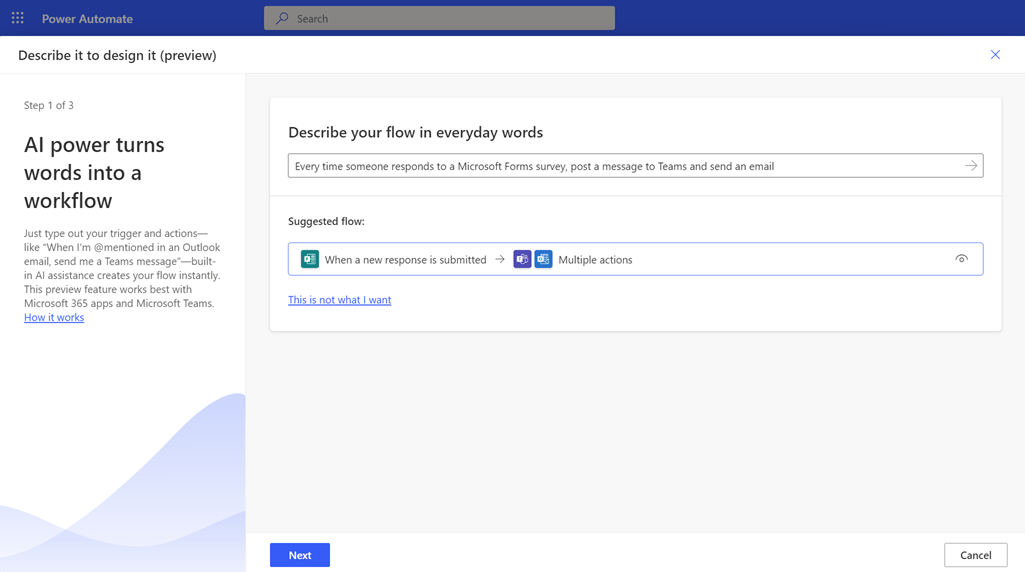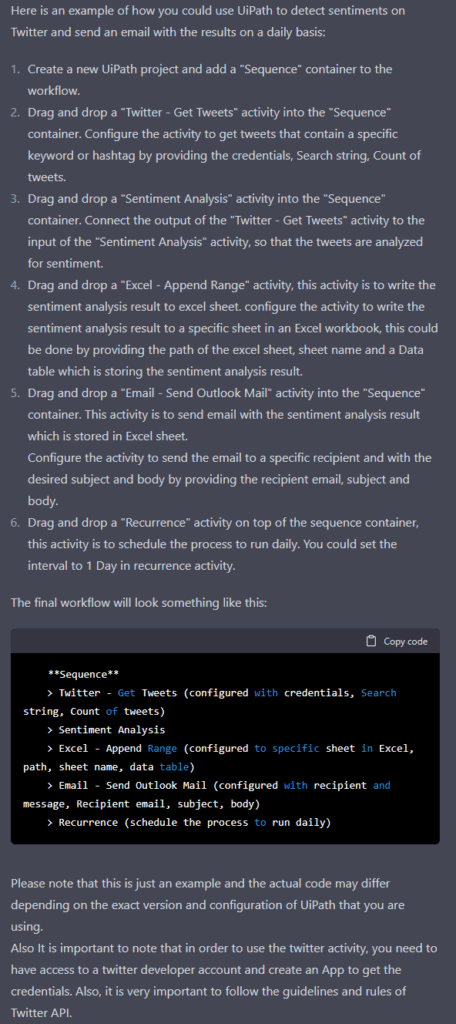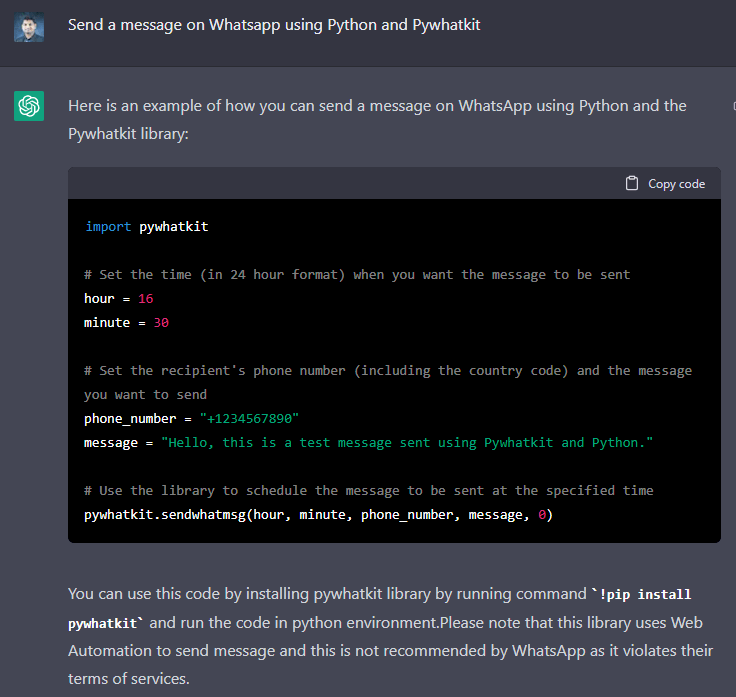Today, we will look at how emerging AI technologies like ChatGPT will completely change Automation.
We will see how AI will enable much faster and more reliable automation through “Prompts”. I am calling it Prompt-Based Automation (PBA). Being on top of this new trend can enable you to be more productive now and be ready for a future where all coding will be training the AI not us explicitly telling the machines what to do. Let’s dive in.
Before we start, What are Prompts?
Prompts are a way to ask AI to carry out a task e.g. generate text or image and in our case, generate a sequence of steps to automate a task. They are short pieces of text, such as a sentence or a question, that the AI model uses to generate a response. For example, a prompt might be “What is the capital of the USA?” and the model’s response might be “The capital of the USA is Washington.”
How does PBA differ from Automation now?
Right now, we drag-drop discrete puzzle pieces (e.g. UiPath Activities) in our RPA and Low-code applications. With PBA, you would use AI “prompts” to generate discrete task automation(s). The AI either suggests these automation pieces or guides you as to what to drag-drop to create the automation.
Here are a few examples of how you can use PBA right now.
Microsoft Power Automate
You can describe the task to Power Automate (PA) and it suggests flows (automation code) that you can use to automate your use case. It uses GPT-3 to translate the natural language to PA code – similar to Github Copilot.

UiPath with ChatGPT
Ask for the Uipath code for a use case and a helpful outline is generated by ChatGPT. I provided this prompt “Generate UiPath code to detect sentiments on Twitter and send an email daily”. Here are the steps and suggested code. This is limited now but is an indicator of things to come.

Python with Github CoPilot
ChatGPT can generate good chunks of Python code accurately. Its Python “knowledge” is better (than RPA tools). For e.g. it could generate useable code for the prompt “Send a message on Whatsapp using Python and Pywhatkit”

While pretty useful to get a quick start, these PBA are pretty limited right now. But the progress of Generative AI like ChatGPT is exponential and we would see these become better much sooner than the previous technologies.
What can we expect to see in the near term?
- Microsoft PBA is likely to get more capable with the impending release of GPT4. With the OpenAI tie-up, they are best placed to ride this AI wave.
- I think we will see some form of PBA from more vendors especially the big RPA and BPM/Low-code vendors as well soon. (~70% probability)
- Even if the current vendors don’t act, people will use ChatGPT to generate the code like the UiPath code above. This will likely get better with the next version – GPT4 though the learning data for these proprietary tools RPA/Low-code is limited.
- Python-based automation could get a boost now that it is “easier” to code Python and generate useful code with ChatGPT and active help from tools like GitHub copilot.
- Finally, we will start to see prompts in day-to-day Microsoft tools like Word, Excel, Teams, etc. to create your automation from the tools directly.
How can we prepare for it?
The best way to keep up with this is to be Digitally Literate and keep up with the latest trends like what you are doing with this Newsletter 😊 Here are three more strategies to keep up:
- Learn by doing: ChatGPT is easily accessible and free right now. Pick an exciting project or topic and go research, and learn as you go. Go to https://chat.openai.com/ and get started now!
- Mentors and Coaches: Look for mentors that can guide you on this journey. They can help you pick courses, answer questions and accelerate your progress.
- Communities: Finally, join online groups like Bot Nirvana. They can help you to connect with other professionals, share knowledge, and best practices, and stay up-to-date with the latest trends.
